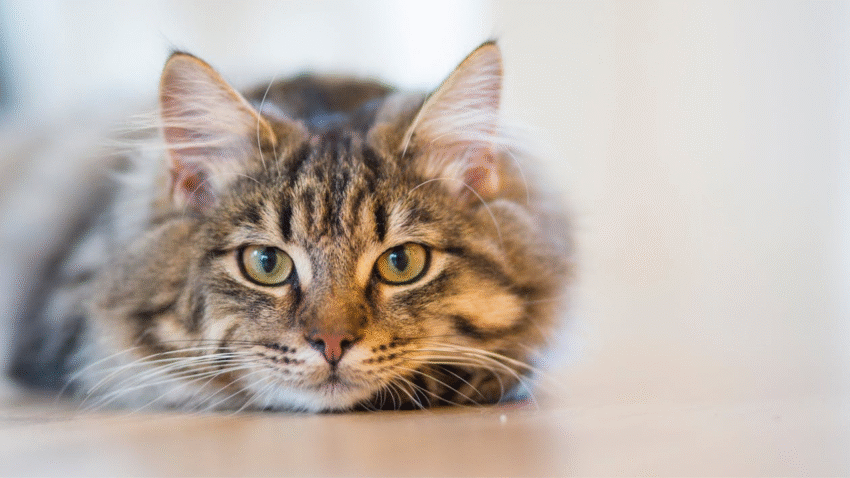Introduction
Cats are masters at hiding discomfort, often showing no obvious signs until an illness has progressed. That’s why it’s important to catch health problems early—when they’re easiest to treat. In this guide, you’ll learn how to recognize early signs of illness in your cat so you can act quickly, seek veterinary care if needed, and keep your feline friend happy and healthy for years to come.
Why Early Detection Matters
Unlike dogs, cats tend to suffer in silence. They instinctively mask pain or weakness, a survival trait inherited from their wild ancestors. But catching early signs of illness can:
- Lead to faster diagnosis and treatment
- Prevent serious complications
- Lower vet costs through early intervention
- Improve your cat’s long-term health and quality of life
The sooner you notice something’s off, the better your chances of managing the issue effectively.
Step-by-Step Guide to Recognizing Early Signs of Illness
Step 1: Watch for Changes in Eating and Drinking
- Loss of appetite is one of the first and most common signs of illness in cats.
- Increased appetite could signal hyperthyroidism or diabetes.
- Drinking more water than usual might indicate kidney disease or diabetes.
- Drinking less water can lead to dehydration and may be tied to digestive or urinary issues.
Monitor food and water bowls daily and take note of any consistent changes.
Step 2: Monitor Litter Box Habits
- Straining to urinate, frequent urination, or crying in the litter box may indicate a urinary tract issue—especially dangerous in male cats.
- Diarrhea or constipation that lasts more than a day or two is a warning sign.
- Blood in urine or stool always warrants a vet visit.
Scoop daily and take a quick glance to make sure everything looks and smells normal.
Step 3: Pay Attention to Grooming Behavior
- Overgrooming or licking a specific area could point to pain, allergies, or stress.
- Undergrooming or a greasy, matted coat may signal arthritis, obesity, or illness.
- Hair loss or bald patches could indicate skin infections, parasites, or hormonal imbalances.
Healthy cats usually maintain sleek, clean coats—so grooming changes are worth noting.
Step 4: Look for Changes in Behavior or Mood
- Hiding more than usual is a common early sign of pain or anxiety.
- Increased aggression, especially when touched, can mean your cat is hurting.
- Lethargy or disinterest in play is often an early red flag.
- Sudden clinginess or vocalization changes may point to discomfort.
You know your cat best—trust your gut when something feels off in their personality.
Step 5: Observe Breathing and Movement
- Panting, rapid breathing, or wheezing are not normal in cats and may indicate heart or respiratory problems.
- Limping, stiff movements, or reluctance to jump can signal arthritis, injury, or neurological issues.
- Head tilting, balance problems, or frequent falling may suggest an inner ear infection or other serious conditions.
Even subtle changes in how your cat walks or breathes should be taken seriously.
Step 6: Check Eyes, Ears, Nose, and Mouth
- Discharge from the eyes or nose can be a sign of infection or allergies.
- Red or inflamed gums, drooling, or bad breath often indicate dental disease.
- Pawing at the face or refusing to eat may also be related to dental or facial pain.
- Ear scratching or head shaking could mean ear mites or an infection.
Make a habit of gently inspecting your cat’s face during cuddle time or brushing sessions.
Common Mistakes to Avoid
- Assuming it’s just “old age”
Changes in appetite, movement, or grooming are not normal, even in senior cats. - Waiting too long to seek help
Many serious conditions can be managed if caught early, but become life-threatening if delayed. - Relying solely on Google
Online research can be helpful, but don’t self-diagnose. Always consult a vet if you’re unsure. - Overlooking subtle signs
Cats don’t always cry or limp dramatically. Look for small, consistent changes. - Skipping regular vet checkups
Even indoor cats need annual wellness exams to catch hidden issues.
Extra Tips & Recommendations
- Keep a health journal
Note changes in appetite, litter box use, mood, or habits. This helps your vet see patterns. - Weigh your cat monthly
Unexplained weight loss or gain is often the first sign of internal issues. - Stick to a regular routine
Sudden behavior changes are easier to spot when your cat’s daily routine is predictable. - Know your cat’s normal
Every cat is different. Some are vocal, others quiet; some eat quickly, others graze. Trust your instincts when something deviates from your cat’s baseline.
Conclusion
Recognizing the early signs of illness in your cat isn’t about being paranoid—it’s about being proactive. Your cat may not be able to speak, but their body, habits, and behavior will tell you everything you need to know—if you’re paying attention. When in doubt, always consult your vet. Catching problems early can make all the difference in your cat’s health and happiness.
🐾 Looking for more ways to care for your cat at home? Explore our blog for helpful, vet-informed guides and tips
